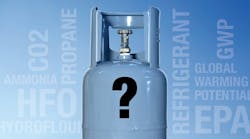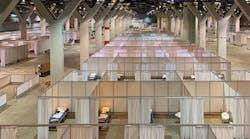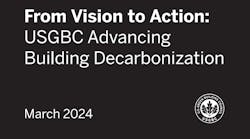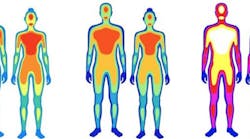As I’ve become older, I have also become less demanding of certain things.
When it comes to indoor comfort, I am more than happy with warmer temperatures in the summer and cooler temperatures in the winter. For one reason, I know that every 1°Fahrenheit (°F) that I reduce the indoor-to-outdoor temperature difference results in potential HVAC energy savings.
Beyond that, I just like it a bit warmer indoors, particularly in the summertime when there can be large swings in temperature and humidity between indoor and outdoor conditions. They can shock one’s system when transitioning from one to the other.
So, I don’t mind keeping my own home a little warmer than most might, for example 78.0°F/25.5°C, if I can also keep it a little drier at the same time, 47% relative humidity (RH), particularly on very hot days here in Austin, TX, where I live. As I write this, it is 101°F outdoors (38.3°C) at 32% RH, with a resulting dew point temperature of 66°F (18.9°C). But it feels more like 105°F/40.6°C according to the weather app on my phone.
Indoors, as mentioned, I’m maintaining 78°F at 47% RH, which is a 56.2°F (13.4°C) dew point temperature, and very comfortable from my personal perspective. For reference, the dew point temperature at 72°F (22.2°C) and 55% RH would be 55.0°F (12.8°C).
Nature's evaporative cooling
One of the ways we as humans maintain thermal comfort is through the evaporation of perspiration (salty water) from the surface of our skin. That's because cooling our body via sweating relies on a principle of physics called "heat of vaporization”.
It takes energy to evaporate this moisture from our skin, and that energy comes as heat removed at a rate of approximately 1,060 Btu/h for every pound of sweat that’s evaporated. As our excess body heat is used to convert our perspiration into vapor, we cool down… think evaporative cooling!
This is one reason indoor fans help us stay cool, as they move more air (more quickly) over the surface of our skin, assisting the evaporative cooling process to do its thing.
It’s said that 20% or more of our body’s ability to maintain comfort may be attributed to the latent heat of vaporization, the exact amount based on our activity level and other contributing factors. When it’s more humid indoors, sweat has a harder time evaporating into the air.
In very high humidity, the air may be nearly full of water vapor and may not “hold” much more. That's where the hot and sticky, or sometimes cold and clammy feelings we sometimes experience come from, both being very uncomfortable. Sweat remains on our skin, unable to evaporate into the air.
Drier air just “feels” cooler to us than more humid air. That’s why I’m comfortable indoors at an elevated sensible temperature and lower relative humidity. For example, cooler indoor air at 72.0°F but at 55% RH might “feel “more like it’s 75.5° (24.2°C). That’s a 3.5° difference in perception due to the humidity level… although I doubt, we could pinpoint it to the nearest half degree.
Sizing matters, so don't overdo it
There are HVAC sizing methodologies you can use to help achieve lower indoor relative humidity conditions, particularly during more extreme summer weather excursions. One of the best things you might do initially is not “oversize” your home air-conditioning system.
A slightly smaller A/C unit allows it to “run longer” when trying to satisfy the space thermostat’s desire to cool the indoors to the thermostat’s temperature setpoint. A slightly smaller unit will need to run a little longer to accomplish this feat, ultimately removing more moisture from the indoor air on humid days.
But here’s the rub…
On a hot and sunny day, good insulation, and double-pane windows slow heat transfer enough for air conditioning to keep both the indoor ambient temperature in check, and the mean radiant temperature inside the building within a few degrees of the air temperature. In this case, the temperature and relative humidity combination may be indicative of how subjectively comfortable we feel.
However, in hot climates with under-insulated buildings, high mean radiant temperatures can push the operative temperature well over 90 F (32.2 C), even with the thermostat set to 75 F (23.9 C). When the surface temperatures of indoor building materials exceed the temperature of our skin, heat will begin to radiate from the hot surface into the body, and we will feel warmer than the actual air temperature of the space.
Just like humidity, operative temperature is another important parameter that affects comfort and occupant health.
Mean radiant temperature. This is the average temperature of all the surfaces that surround us, things like ceilings, windows, walls, floors, etc. Hot or cold, these make a difference in our comfort. For radiant heat to move between an object and the human body (or the human body and an object), it needs an uninterrupted line of sight.
Operative temperature. This can be approximated by averaging the mean radiant temperature and the average air temperature in a room. Other calculations of operative temperature consider effects of air movement, humidity, and additional variables. Roughly half of how we experience comfort is determined by the radiant environment.
For nonresidential buildings, ASHRAE guidelines recommend 68°F to 74°F in the winter and 72°F to 80°F in the summer. It also recommends a relative humidity (RH) of 30 to 60%. ASHRAE suggests that buildings or spaces equipped with or served by mechanical cooling equipment shall be provided with dehumidification components and controls that limit the indoor humidity to a maximum dew point of 60°F (15°C) during both occupied and unoccupied hours whenever the outdoor air dew point is above 60°F (15°C).
Regardless of where you like to set your home thermostat’s temperature set point, know that if I ever come over to visit, I’ll be perfectly happy at a higher temperature and lower relative humidity, if you can achieve both.
If you can’t, we’ll just share ice cold margaritas and drink until we’re comfortable.
About the Author
David Schurk is Director of Applied Engineering Markets for Innovative Air Technologies in Covington, GA. An ASHRAE Life Member and Distinguished Lecturer, he is also committee chair for the American Society of Healthcare Engineering (ASHE) Sustainability and Decarbonization Leadership Task Force. Schurk has over 40 years of experience in the design and analysis of heating, ventilating, and air-conditioning systems for a variety of market sectors, with a special focus on healthcare and aerospace environmental control and air quality. Contact him at [email protected].
References
Why Homes Often Feel Warmer Than the Thermostat Suggests, Jonathan Bean, Scientific American.











